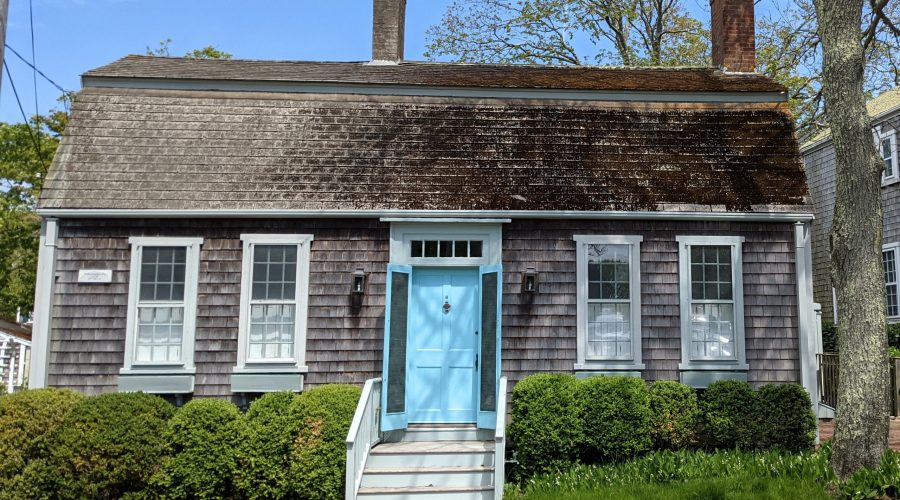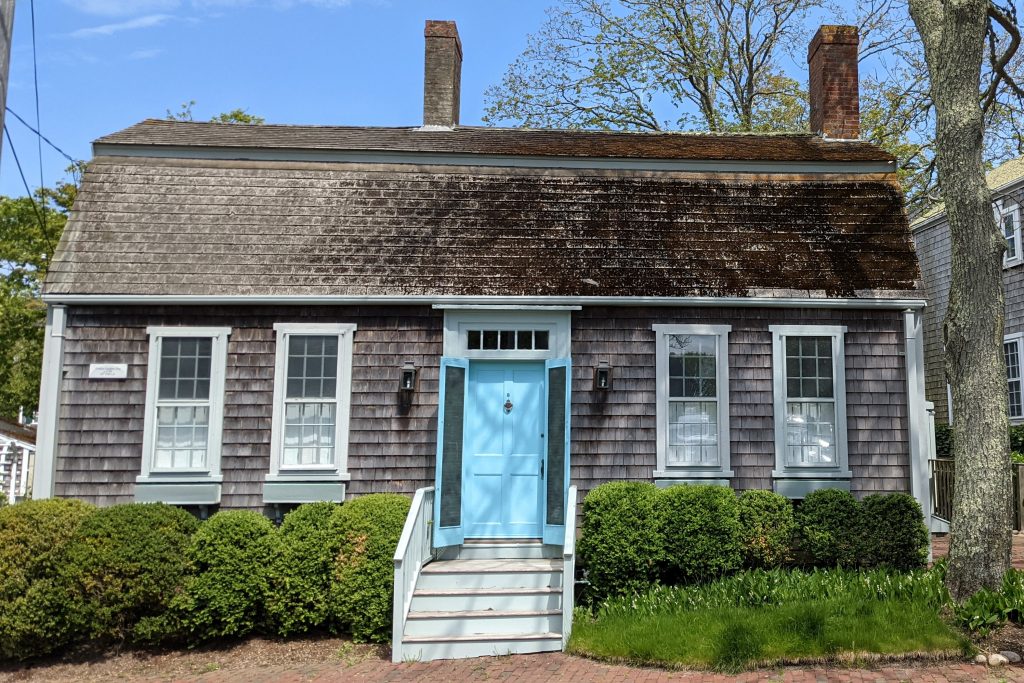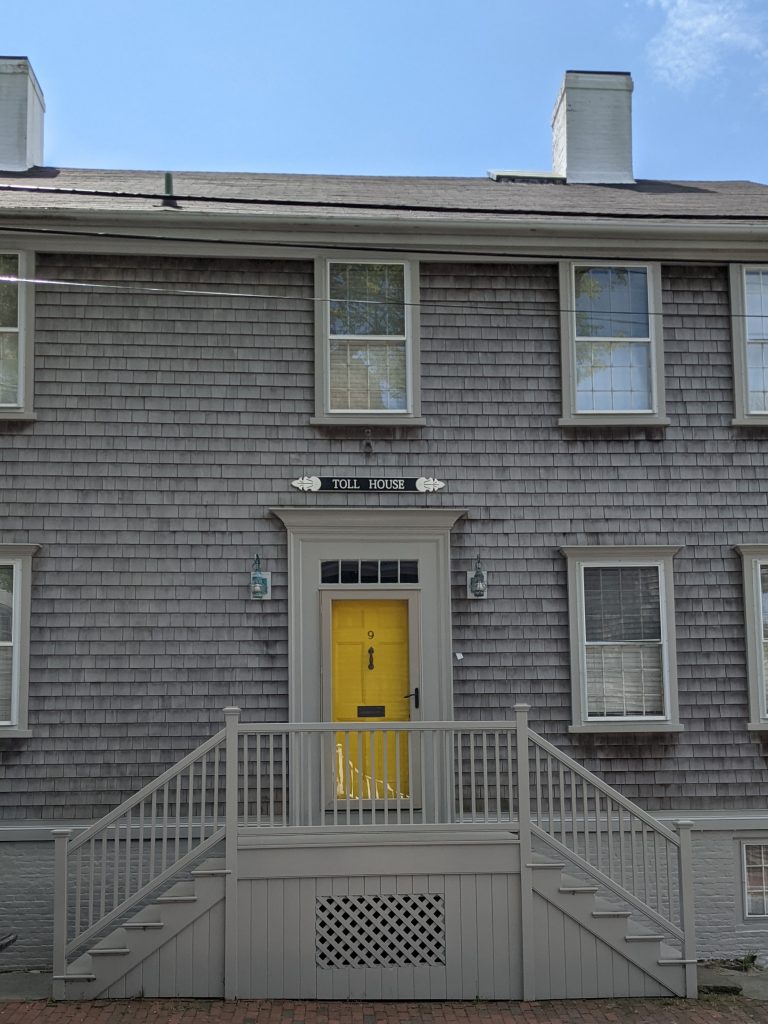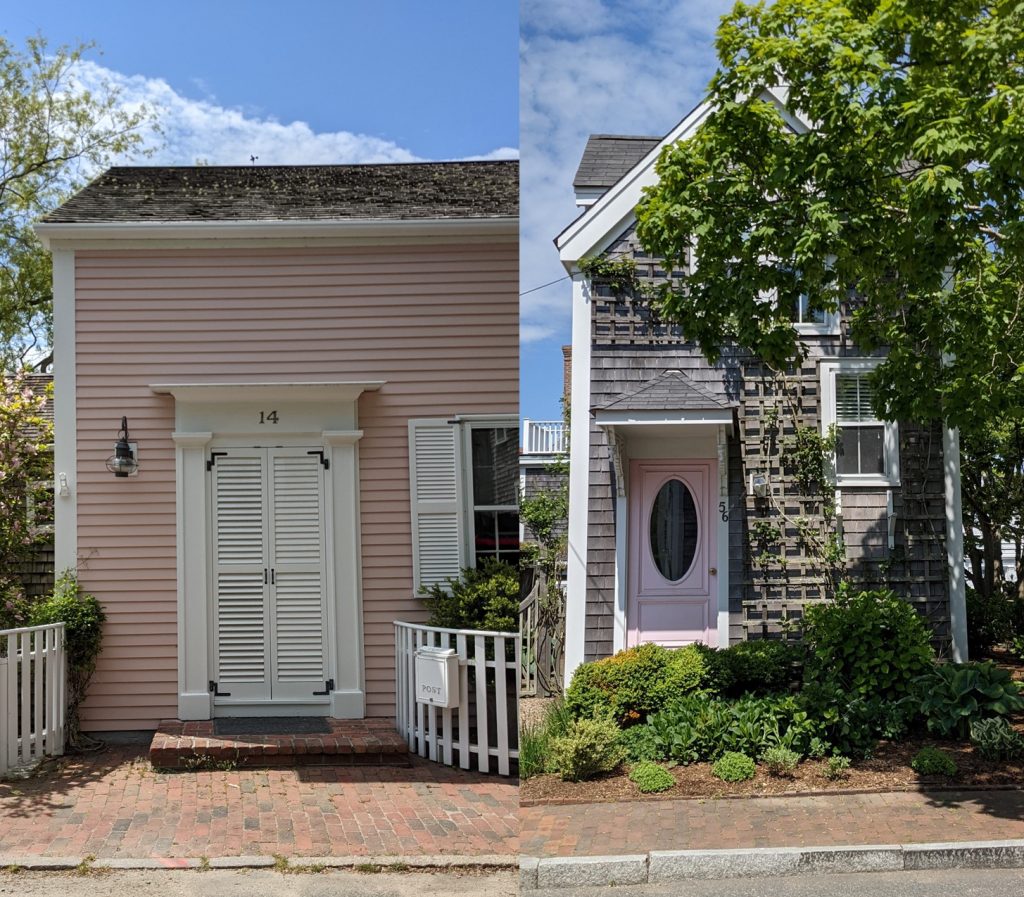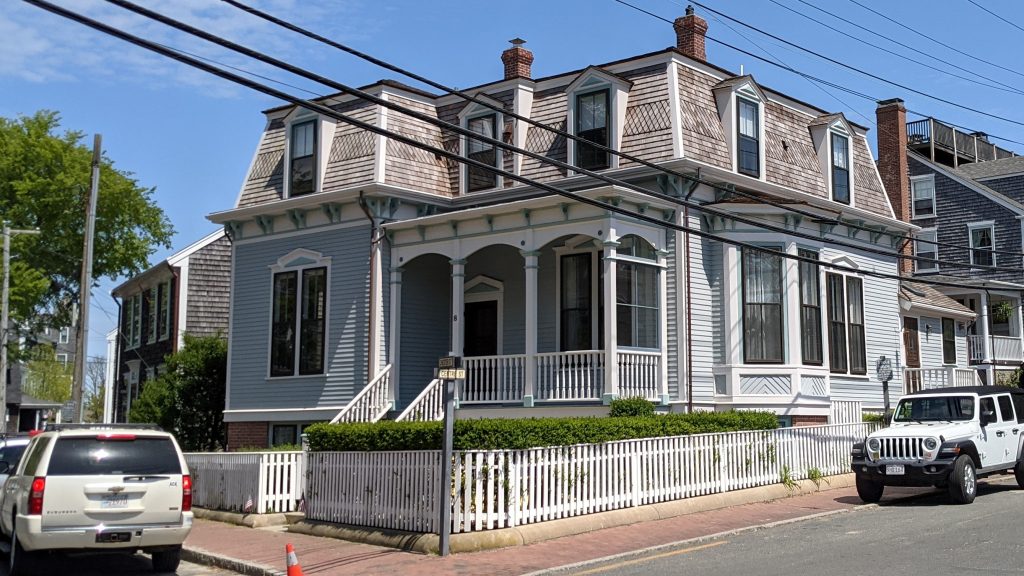There is a widely held belief that only twelve paint colors may be approved by the Historic District Commission for exterior use on Nantucket. The HDC maintains a list, and we know them well – Hamilton Blue, Essex Green, Quaker Gray, Main Street Yellow, Nantucket Red, to name a few. Despite this notion, the HDC can technically approve any exterior color they see fit, as long as it can be considered to be in keeping with Nantucket’s historic character.
According to the guidelines set forth in Building With Nantucket In Mind, “The colors of Nantucket should be a reflection of its sprit, an old weathered and peaceful town. It is recommended that the colors on walls of buildings be of subdued hue intensity and light to medium value. Foundations and trim may be a subtle variation or contrast with the color of the house.” The guidelines do make color recommendations for specific architectural features. The colors listed for doors include: white, black, brewster green, dark green, beige, barn red, gray blue, and yellow. These are the inspiration for the familiar colors we see on a visit to Marine Home Center, yet there is ample evidence around Nantucket for other colors.
On an island where so many homes, even those with clapboard facades, are clad in bare natural to weather cedar shingles, a little trim color can make a big impact. Tastes have changed over time, as has paint technology. In the 17th and 18th centuries, Nantucketers did not have lead needed to mix white paints and generally employed earth tones. Josiah Quincy, visiting Nantucket in 1801, recorded in his journal that most houses were “without paint, and with those which have it, red is the predominant color.” By the mid-19th century, lead white paints were available and widely employed on Greek Revival homes like 94 and 96 Main Street, constructed in 1847 and 1846, respectively. Still, white paints of the 19th century lacked the brilliance of today’s pigments, created with titanium dioxide instead of lead.
Most color choices that deviate from the “standard” Nantucket colors are based on historical evidence for a similar color, either based on historical images, or on historical paint analysis.
The paint color guidelines in Building With Nantucket in Mind note that “The choice of color for a building must blend with the colors of adjacent buildings and the overall setting.” So, don’t expect to see any neon oranges or purples anytime soon. Nevertheless, here are some of our favorite “nonstandard” paint colors that can be spotted around the Old Historic District.
The George Garnder House at 8 Pine Street, which is protected by an preservation easement held by NPT, has an vibrant robins-egg blue door and shutters. Similar shades can be seen around Cliff Road and other areas.
The door of the Zenas Coffin House, across the street at 9 Pine, is a vibrant chartruse.
14 Lily Street has pretty in pink clapboards, similar to the door at 56 Fair Street.
The former Centreboard Inn, on the corner of Centre and Easton Streets, has an ecclectic color scheme with pale blue and dusty mauve, suitable to its Victorian style. Other Victorians with period-appropriate paint jobs that differ from the HDC’s “approvable” list of colors include 19 and 21 Broad Street.



